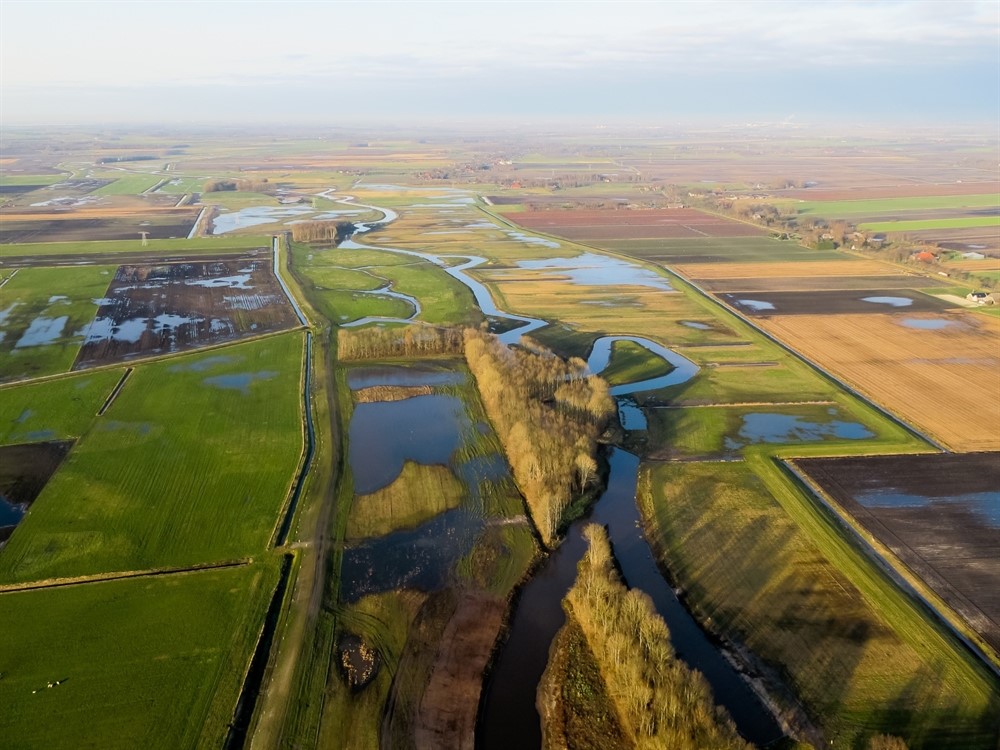Torenveen-Bonnerklap Hunze valley natural climate buffer
Between 2010 and 2015, Het Drentse Landschap nature organisation, the Hunze en Aa’s district water board, and other parties redeveloped the Torenveen-Bonnerklap area. Their goal was to restore nature and increase biodiversity. The parties intended to restore the Hunze brook course and improve fish migration. Furthermore, the area needed to be capable of prolonged rainwater collection during extreme downpours, in order to prevent waterlogging in the city of Groningen. The paragraphs below explain what has been done.

What was the reason for the project?
For a long time, many sections of the Hunze brook had been canalised in order to enable farming in the brook valley. Many of the Hunze’s original bends had disappeared. In 1995, Het Drentse Landschap, Het Groninger Landschap, and the World Wildlife Fund developed the Hunze vision document, intended to create more nature in the Hunze valley. The document set out that the Hunze should once more be allowed to meander and overflow. Furthermore, the brook had to be surrounded by moist and wet nature reserves, in the form of wet grassland, reedland, and marshy
View this impression of the area in 2012 or the short documentary from 2014, on the redevelopment of the entire Hunze valley.
What measures have been taken?
In the purview of redeveloping this 500-hectare area, the collaborating parties have taken the following measures:
- The parties have procured land, also beyond the Torenveen-Bonnerklap area. This has enabled the exchange of land with farmers. Farmers were eager to cooperate, since in many cases, the exchange left them with better soil in return. Some farmers are still involved as tenants: they graze their cattle in the new nature reserves;
- The original brook bends have been restored;
- Old embankments have been excavated and new embankments have been constructed to protect farmland in the vicinity against waterlogging;
- Since farmland requires a lower water level than nature, the water levels have been separated. This ensures that both farmland and nature will have as ideal a water level as possible;
- The canalised section of the Hunze has been closed off. As a result, the main Hunze stream will follow the new loops and bends. Excessive rainwater can flow into the valley via thresholds and the old main watercourse;
- Channels have been dug to collect and gradually release water;
- Rather than weirs, boulder thresholds have been constructed in the brook. These thresholds were essential to accommodate height differences and still enable fish migration. The boulder thresholds serve as fish passages for such migratory fish as silver orfe and dace.
What are the results?
The measures taken in the Torenveen-Bonnerklap area have produced the following results:
- In the new nature reserve, wet grassland, marshes, and swamp forests are developing, featuring a wider biodiversity: a wider range of plant species, insects and birds. Furthermore, the area accommodates an increasing number of beavers and otters, which enhance nature;
- The new nature reserve attracts visitors, which is of benefit to, e.g., the catering industry. For example, visitors can take a canoe trip along the Hunze;
- Since the Hunze is meandering again, its current is diversifying, which attracts new fish species and other plant species. This enhances the diversity and beauty of the natural environment. In addition, the gradual reduction of fertiliser and pesticide pollution in the surrounding farmland has improved the water quality.
Contact person
Uko Vegter
Stichting Het Drentse Landschap
u.vegter@drentslandschap.nl
0592 31 35 52
